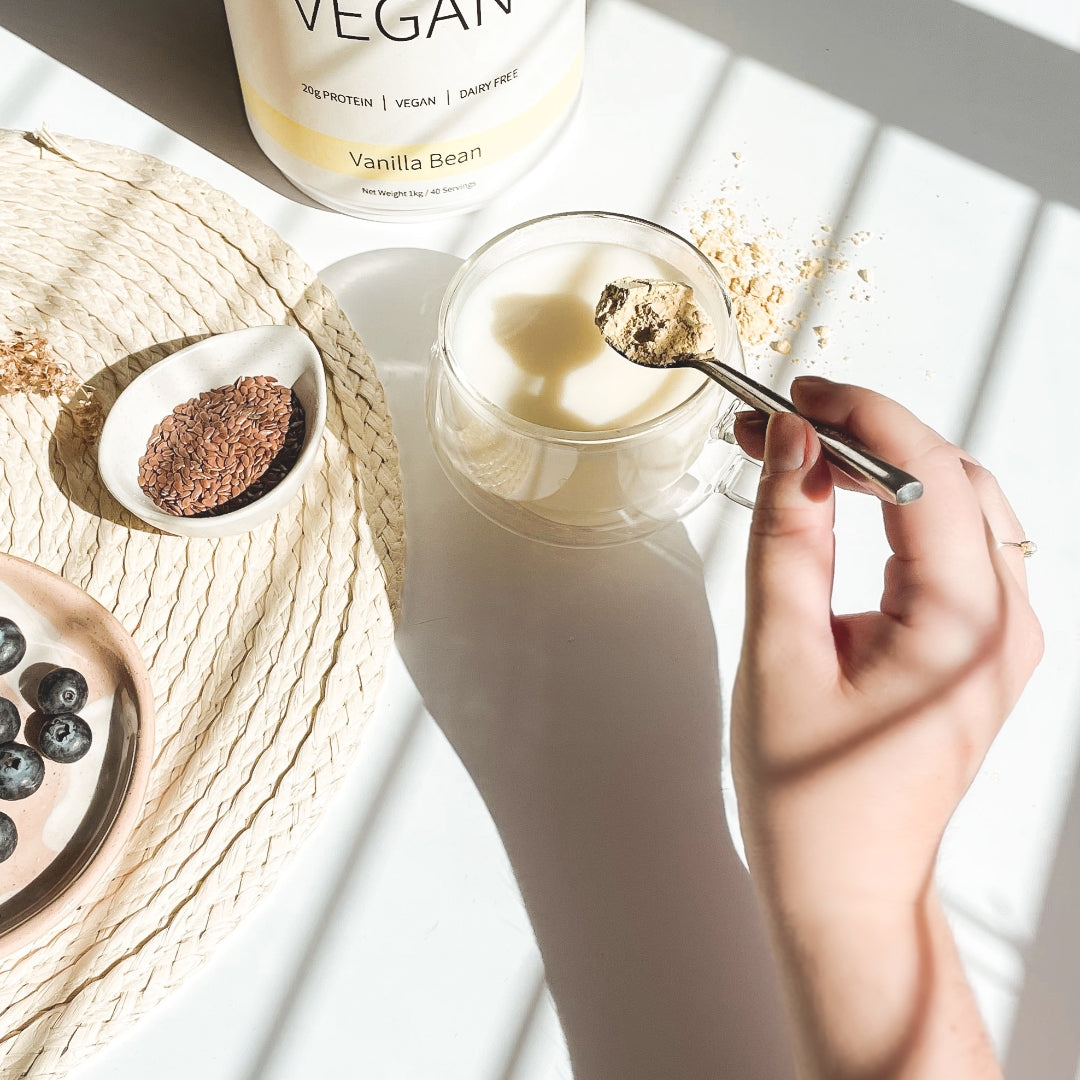Whey Protein vs. Pea Protein: Understanding the Difference
When it seems like everyone and their mum is taking a different protein powder supplement, it can be hard to decide which is best for you. The most common protein powders in NZ are whey protein and pea protein. Whey has traditionally been the most popular protein supplement in the market, but with the rise in vegan and plant-based diets, plus more and more products that cater to food intolerances, plant-based proteins have become increasingly popular across the board. We’re seeing more whey consumers make the change to pea based protein powder too.
Both are a great option for upping your protein intake, but what are the real differences between the two? Let’s break it down.
The Basics
Whey is a milk by-product that typically goes to waste while making cheese. This protein contains milk-based sugar, and can also often include gluten and lactose – making it unsuitable for those with lactose intolerances or coeliac disease.
Pea protein on the other hand is plant-based, and therefore completely lactose-free. It’s made from golden peas, so typically doesn’t have any allergen warnings connected to it. Those with gluten or dairy intolerances will likely find pea protein much easier to digest, with less side effects that are commonly associated with whey protein like bloating or feeling gassy.
Nutrition Profiles
On average when comparing NZ whey protein and NZ pea protein, we see the following (bearing in mind that this can differ brand-to-brand):
- On average, whey and pea have the same amount of protein per serve (typically around 20g per 25g serve)
- Both are low in carbs, fat, sugar and fiber
- Whey protein has more calcium and potassium...
- ...but also more cholesterol
- Pea protein has more iron
-
Both act as a great source of antioxidants
Amino Acids
Both proteins contain all 9 essential amino acids, which are considered the building blocks of proteins. This means that they are both perfect for rebuilding and repairing your body.
Where they differ is the amounts of these 9 amino acids – whey contains more methionine, whereas pea protein contains more histidine and phenylalanine. While their amino acid profiles are different, they are fairly similar in nutritional value when looked at as a whole, and are both great for muscle growth and repair.
Digestibility and Absorption
Whey is more of a ‘fast-acting’ protein and is quickly absorbed into the body. Pea protein is slower, but it can be easier to digest due to its small particle size, which means it dissolves smoothly and easily, aiding in digestion and absorption.
Sustainability
One of our favourite things about pea protein is that it is a far more sustainable source of protein, with a much lower carbon footprint, and up to 10 times less land and water usage than that of animal-based proteins.
The Verdict
Whey protein does have a minimal advantage in speed of absorption and amino acid profile, so if you can tolerate whey, then it could be a great option for muscle gain. Pea protein offers almost the same performance as whey in regards to muscle building (while being much gentler on your stomach) and is the clear winner in terms of sustainability.




